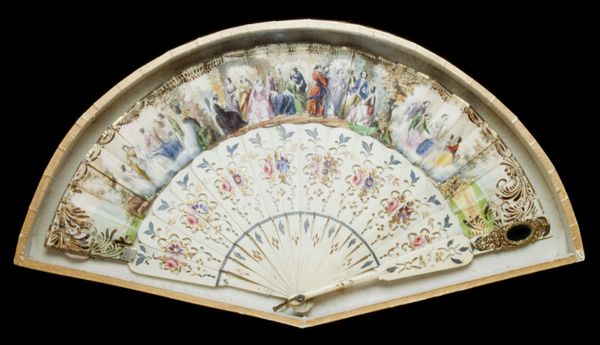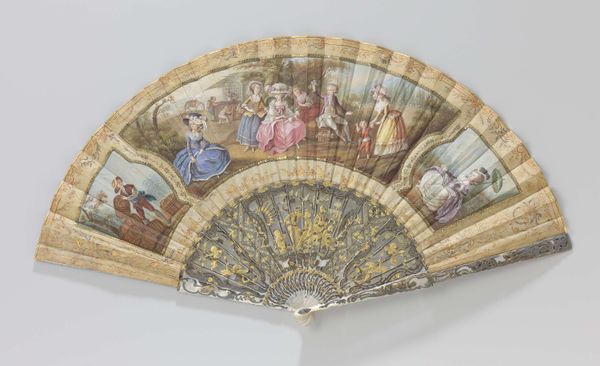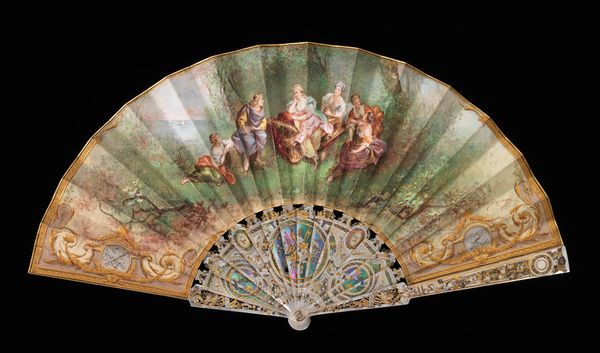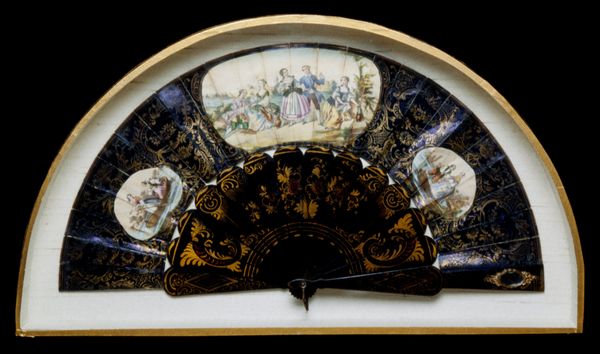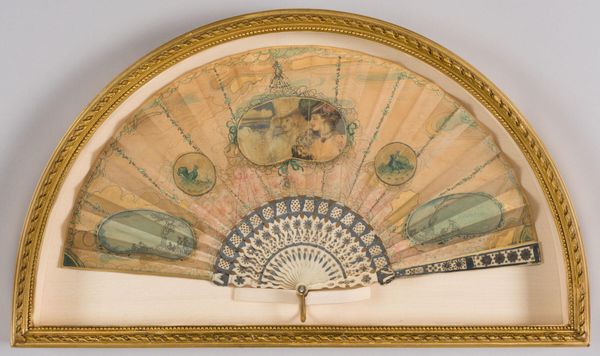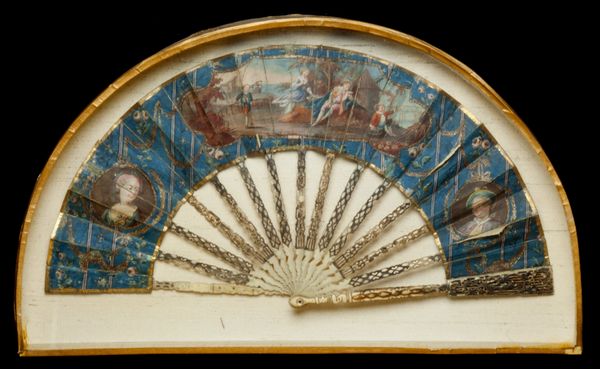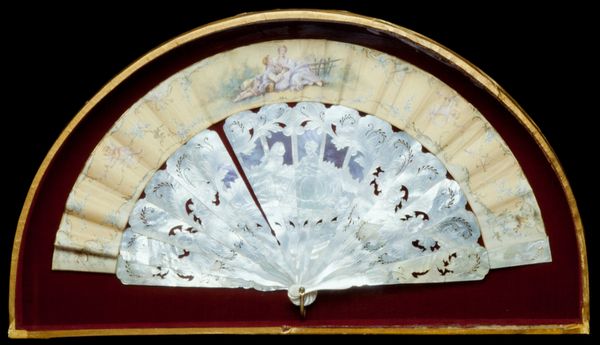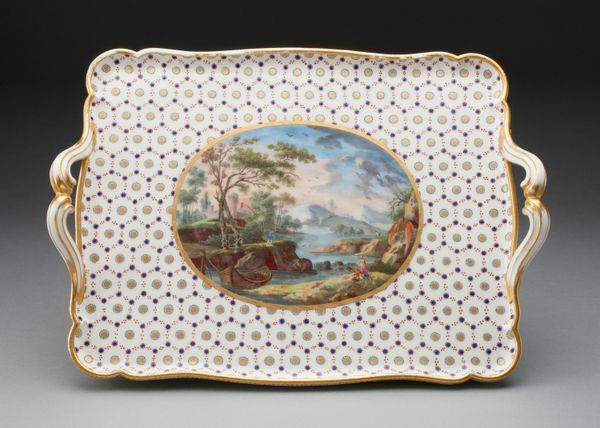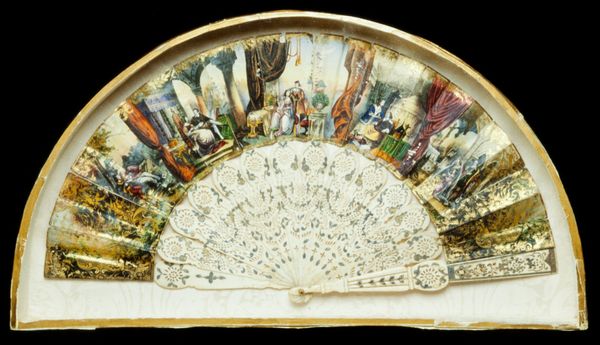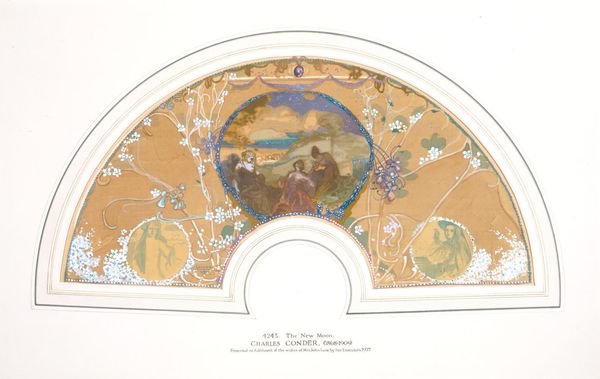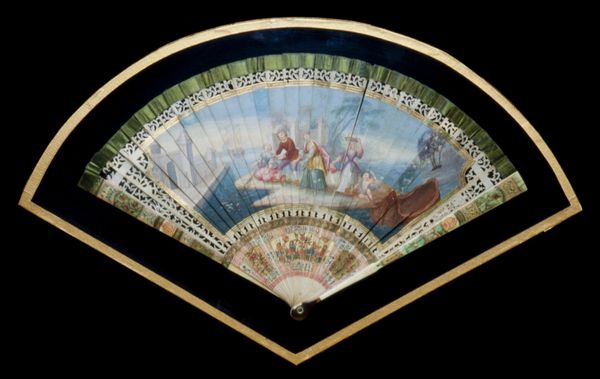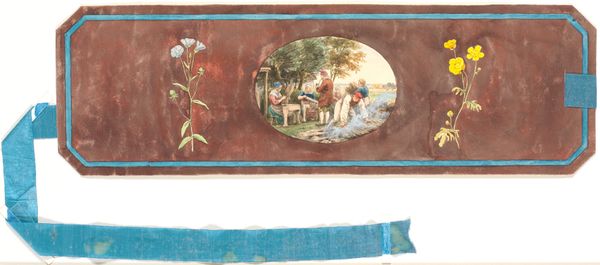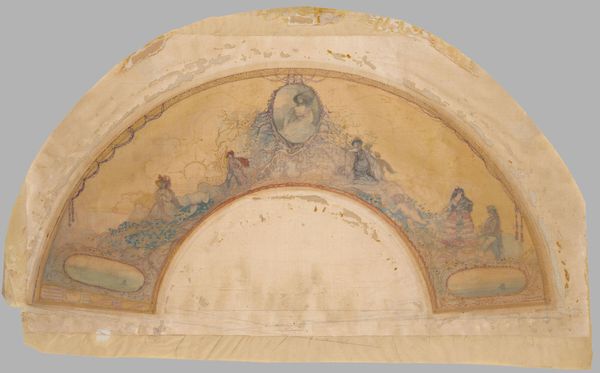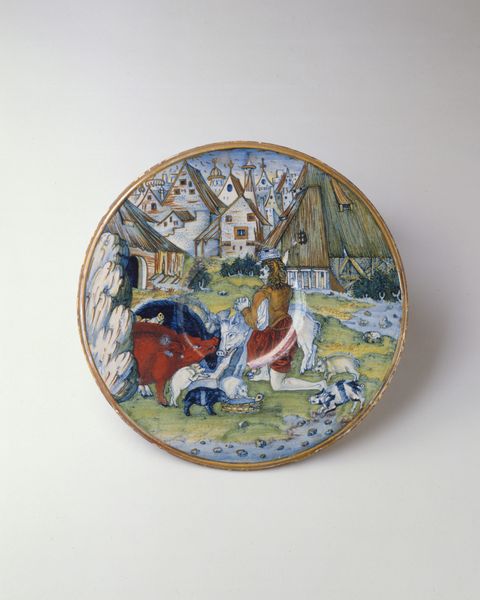
Dimensions: 16 1/4 x 9 in. (41.28 x 22.9 cm) (framed, mounted)
Copyright: Public Domain
Curator: Looking at "Fan-'Amore Scene-Verno Martin'," dating from the 19th century and held at the Minneapolis Institute of Art, I’m immediately struck by its elegance. The pastel hues create such a soft, dreamlike atmosphere. Editor: The landscape scene does indeed have a particular lightness. Tell me, what can you share about the processes and conditions surrounding its creation? A fan seems like a humble support, so I'm interested to learn what purpose it would have served. Curator: These painted fans were actually highly fashionable accessories in 19th-century France, especially those that depicted romantic or pastoral scenes. This mixed-media work is likely an oil painting, miniature, used as part of the wider manufacturing process of functional, decorative objects intended for bourgeois consumption. Its Rococo styling harkens back to earlier periods, with that courtly emphasis on leisure and romance, although by this point, it would likely have served to highlight the refined and upper-class taste of its consumer. Editor: The figures definitely evoke that aristocratic spirit, don’t they? They’re arranged so deliberately within the composition, almost like performers on a miniature stage, inviting narrative analysis through form alone. The artist employs delicate brushwork in creating an atmospheric scene, even given the constraints of the small and curved plane of a handheld fan, they created depth with hazy, bluish distance effects, contrasted to sharply drawn figures, all while conforming to certain design expectations, and therefore production practices of the time. Curator: Precisely! It showcases the skill required to produce desirable objects during the period. Furthermore, fans have often carried additional social significance - for example, they are used as communicative objects and instruments. Even without access to extensive background details, a formal understanding of their structural composition still creates compelling viewing, even now. Editor: Absolutely. The craftsmanship is undeniable, even across these many years that it’s existed, even separate from the original social situations it engaged with. Ultimately, looking closer at how its intrinsic design and manufacturing come together brings us an aesthetic appreciation from a socio-economic vantage. Curator: Yes, looking at the relationship between aesthetic choices and commercial conditions deepens my understanding of objects.
Comments
No comments
Be the first to comment and join the conversation on the ultimate creative platform.
